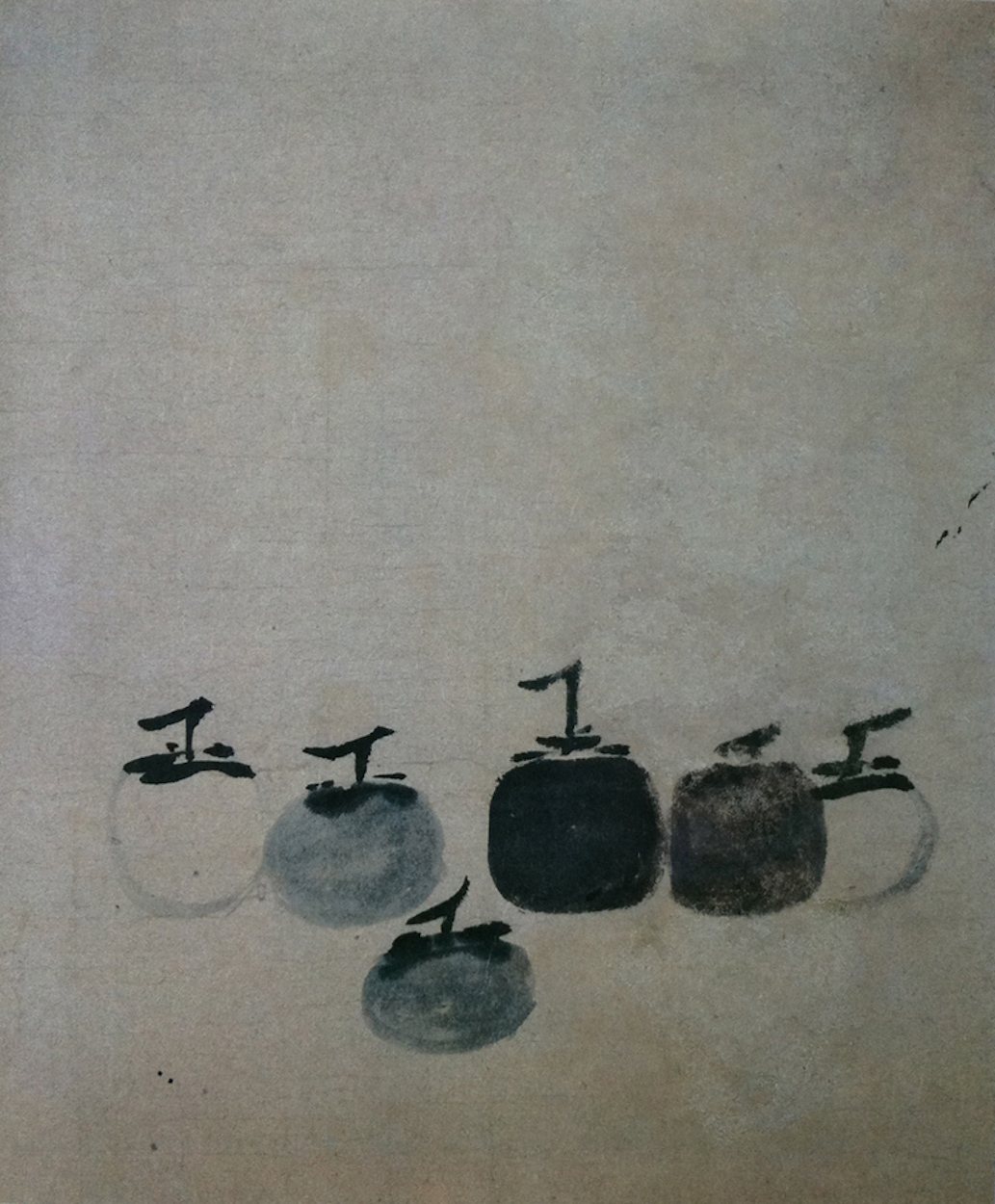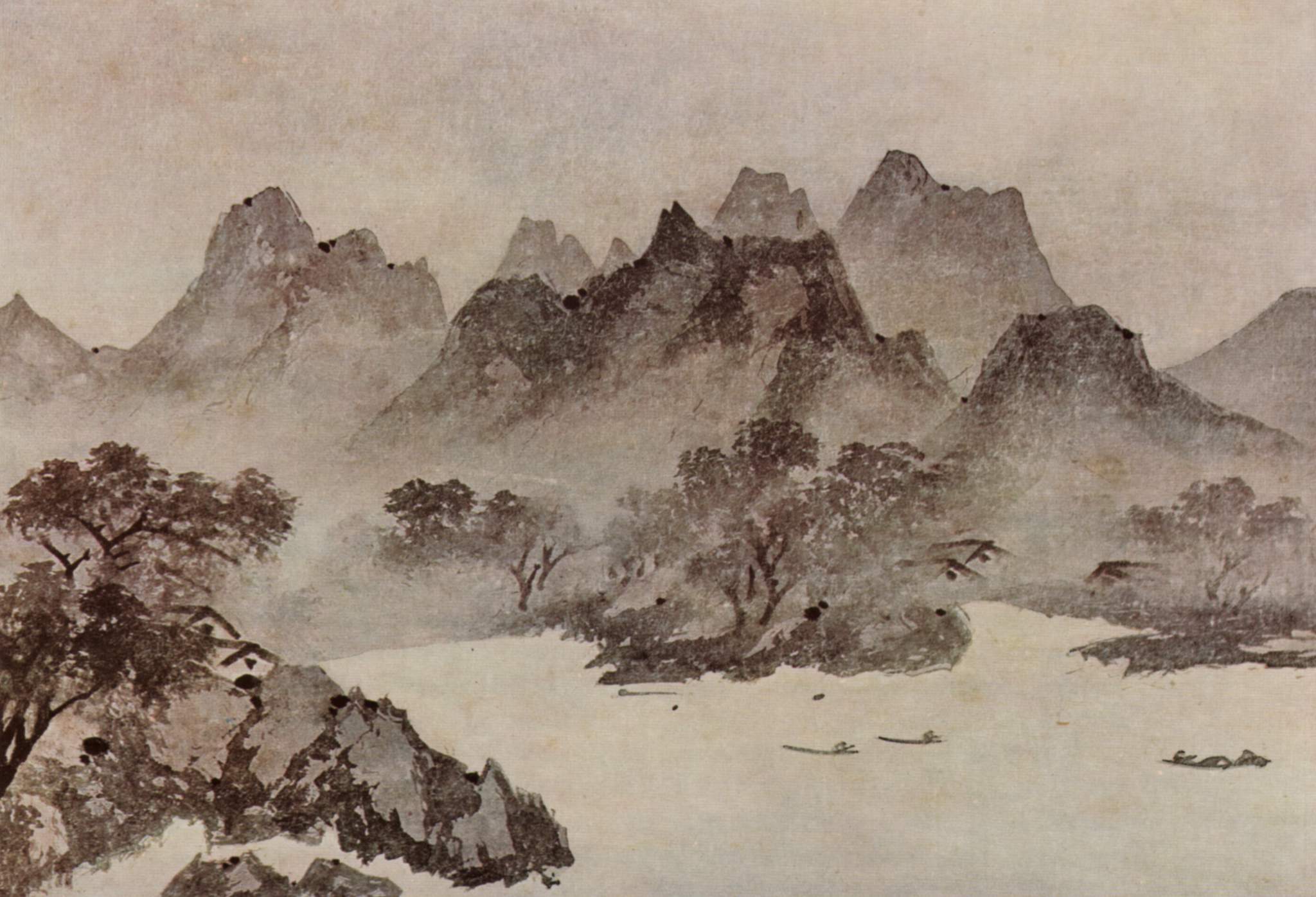The exact time of when this painting was produced remains unknown, but it is a work by the thirteenth-century Chinese Zen Buddhist monk Muxi Fachang 牧溪法常, or more well-known as simply Muqi.
During his lifetime in the Southern Song dynasty, an era for the exquisite Chinese literati painting, Muqi’s artistic style was very much neglected by the mainstream Chinese audience, but later on grew enormously popular and influential overseas, especially in Japan.
Six Persimmons is a hanging scroll painted with ink on paper. The entire painting is composed of merely six persimmons lined up in a void. Muqi’s brushwork is extremely succinct and simple here. It seemed that he didn’t make an effort to do this. A child would have painted it! There is subtle contrast, however, in the shade, shape, and pose of these six painted persimmons. They look innocent yet playful, distant yet intriguing. It really makes you wonder: what is the message here?
In fact, a Zen-themed painting like this is produced not to be just viewed, but to be meditated on. Zen Buddhism is a religion of meditation; so is its art. The painting itself has no social or political purpose; it is made to stimulate or inspire meditation. Interestingly, the painting now resides in a Buddhist temple named Daitoku-ji in Kyoto, Japan. Can you believe that monks today still look at this artwork and practice meditation on it?
- Wei Li


 Muxi Fachang
Muxi Fachang